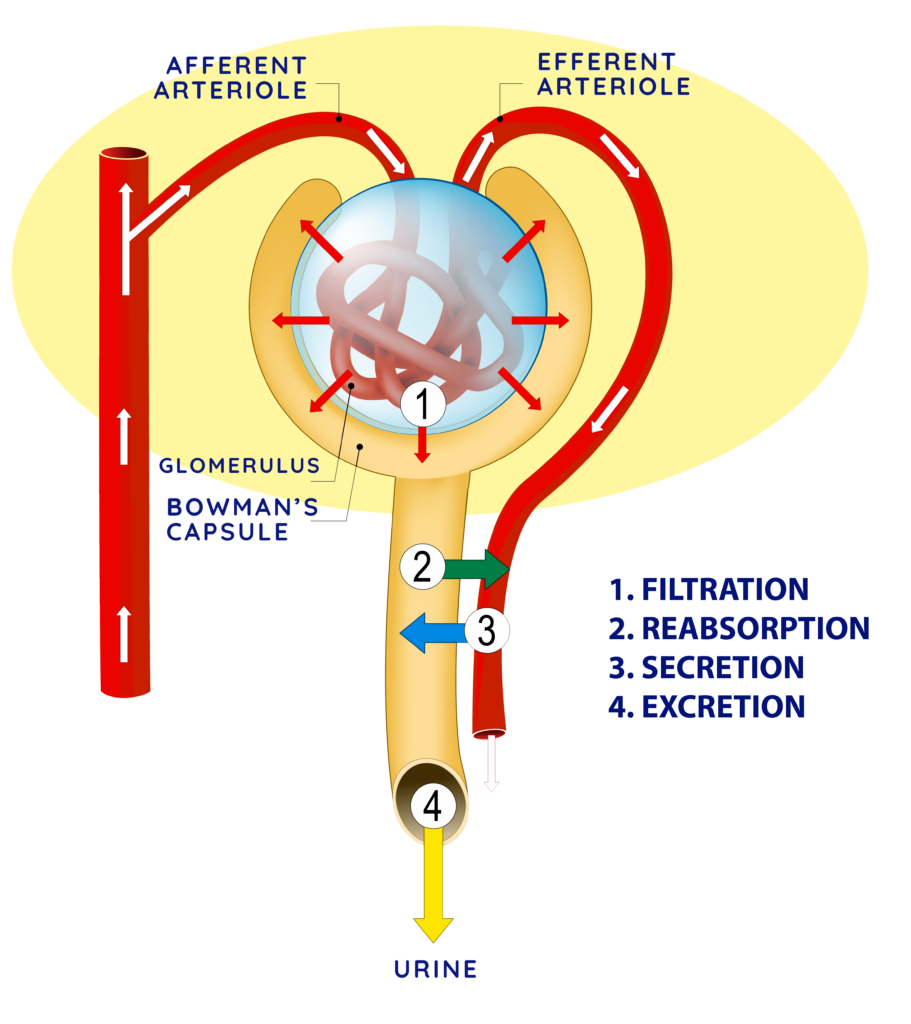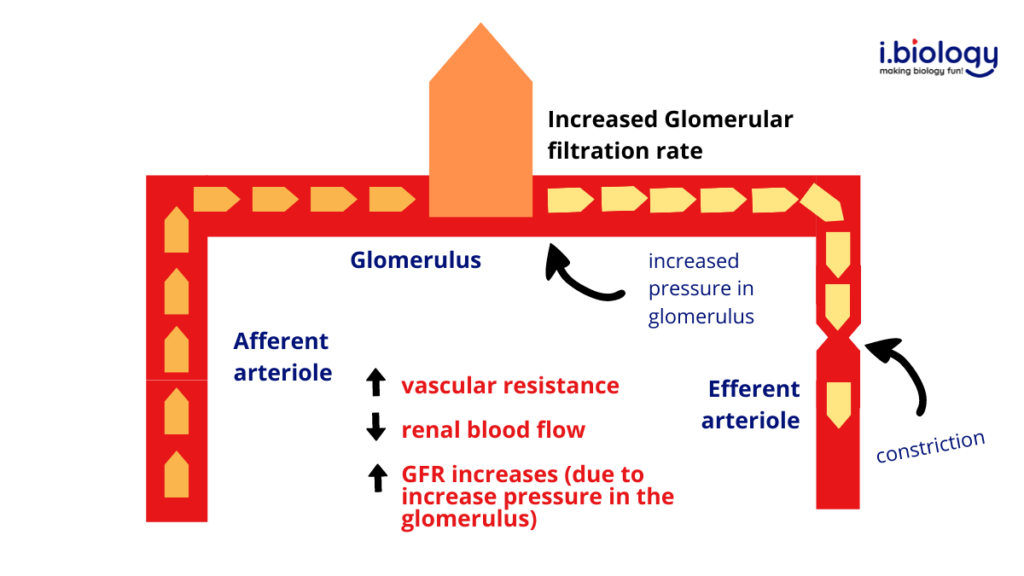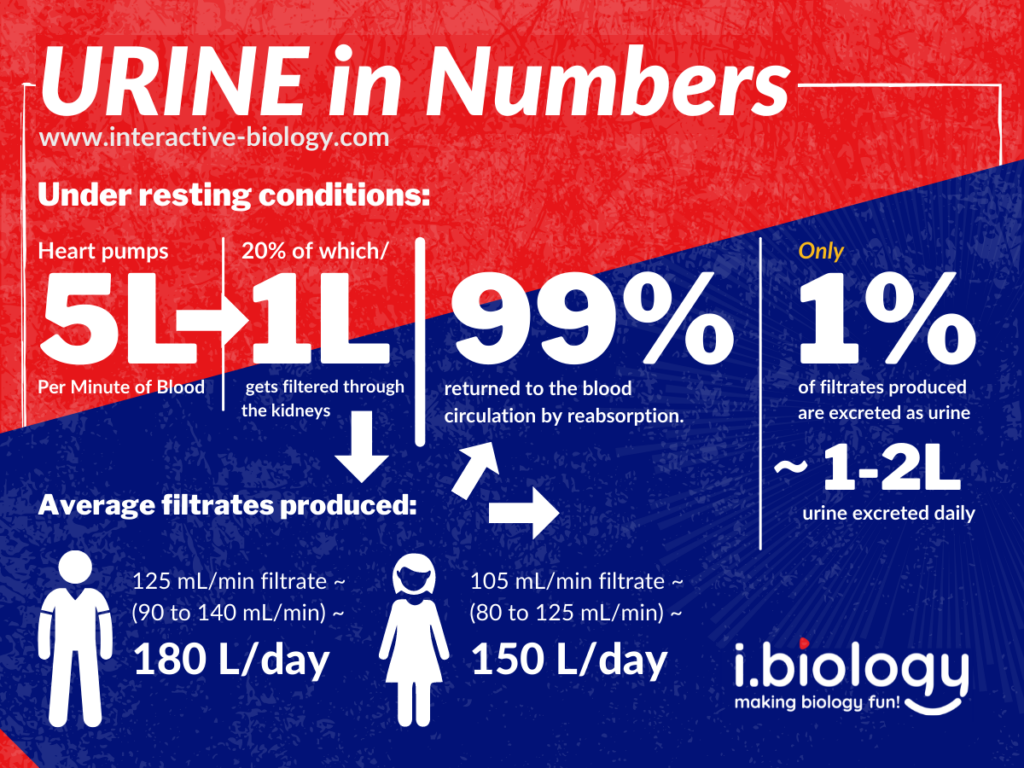By now, we all know that the major function of filtration by the urinary system occurs within the glomerulus of the nephrons. The nephrons are the functional unit of the kidneys. Hence, the term “Glomerular Filtration.”
Zooming in and examining the structure of the nephron, we learned that the glomerulus is a specialized bundle of capillaries situated between the afferent and efferent arterioles. It is also contained within the Bowman’s capsule. This section of the kidney is collectively referred to as the renal corpuscle.
Review: Blood Supply to the Kidneys
From a previous video on kidney blood supply, we have seen how blood flows from the heart down through a system of arteries to the kidney’s tiny functional units or nephrons via the afferent arterioles.
The blood goes through glomerular filtration and then, continues to flow into the efferent arteriole, to the peritubular capillaries, then leading to a system of veins back to the heart.
What happens during Glomerular Filtration?
Glomerular filtration is the first step in urine formation. As the term suggests, this process occurs in the glomerulus of the nephrons. Blood enters the afferent arteriole into the glomerulus, and at this stage, undergoes filtration to eliminate excess water and waste products from the blood.
The glomerulus is a special bundle of vessels with a thin and permeable membrane that allows for smaller molecules (sizes of < 1.8nm) from the blood to get filtered out. If the filtrate is found to include large proteins, it could signal a problem in the urinary system. The membrane is also made of negatively charged glycoproteins such that negative molecules cannot be filtered out, as well.
This filtrate then moves down into the rest of the renal tubules to undergo the remaining processes of reabsorption and secretion.
During the filtration process, larger molecules such as blood and other proteins stay in the blood vessels to continue and move into the efferent arteriole.
Glomerular Filtration Rate is then defined as the rate at which all functional nephrons from both kidneys are able to filter in one minute. Or, in other words, it measures the filtrate volume formed by both kidneys per minute.
Effects of Afferent and Efferent Arteriolar Vasconstriction on Glomerular Filtration Rate
At certain times, our body may need to increase the filtration rate to get rid of certain substances. Sometimes, there may be a need to decrease filtration to keep certain substances in the blood.
Using a simplified illustration of the renal corpuscle below, we will show how arteriolar vasoconstriction affects the rate of glomerular filtration.

A constricted afferent arteriole results in less blood entering the glomerulus. As a result, there is less pressure inside the glomerulus causing less filtration to occur, and so, less filtrate is produced. Less blood also leaves the efferent arteriole.
On the other hand, if the constriction occurs on the efferent arteriole, blood can’t leave the glomerulus easily, pressure builds up causing the filtration rate to increase. The fluid inside the glomerular walls is being squeezed and pushed through the membrane producing higher than normal amounts of filtrate.
Smooth muscles make up the walls of the afferent and efferent arterioles. By constricting and relaxing these muscles, the diameter of these arterioles can be influenced and in return affects the glomerular filtration rate.
Summary
- Glomerular Filtration occurs in the glomerulus within the renal corpuscles of the kidneys.
- Glomerular Filtration Rate may be influenced by constricting and relaxing the smooth muscles around the afferent or efferent arterioles. Depending on which arteriole is constricted will increase or decrease the filtration rate.




